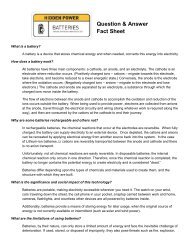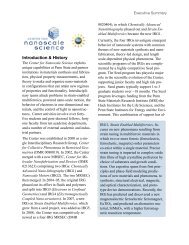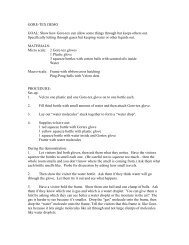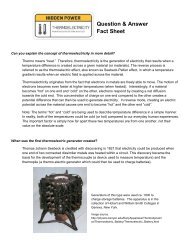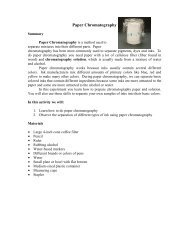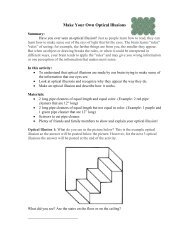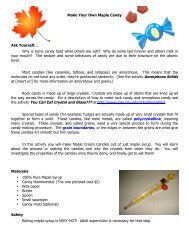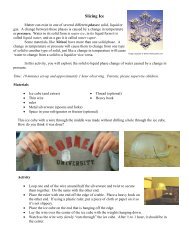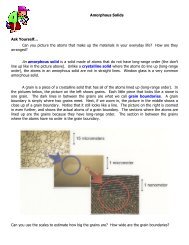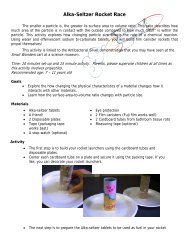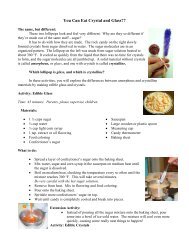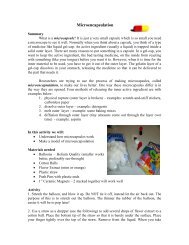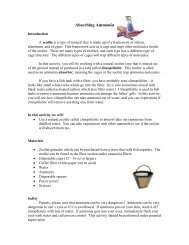Color Mixing with Roy G. Biv - the Center for Nanoscale Science - an ...
Color Mixing with Roy G. Biv - the Center for Nanoscale Science - an ...
Color Mixing with Roy G. Biv - the Center for Nanoscale Science - an ...
You also want an ePaper? Increase the reach of your titles
YUMPU automatically turns print PDFs into web optimized ePapers that Google loves.
The primary colors shown to <strong>the</strong> left are Red, Blue<br />
<strong>an</strong>d Green. When <strong>the</strong>y combine, <strong>the</strong>y make o<strong>the</strong>r<br />
colors. Red + Blue + Green combine to make<br />
white. Red <strong>an</strong>d Green combine to make Yellow.<br />
Blue <strong>an</strong>d Green make Cy<strong>an</strong>. Red <strong>an</strong>d Blue make<br />
Magenta<br />
3. Find some colored objects around your house; list <strong>the</strong> objects in <strong>the</strong> table below<br />
according to <strong>the</strong>ir color in white light. Examples: clothing, construction paper, be<br />
creative!!<br />
4. Test <strong>the</strong>se objects that you find in red, green <strong>an</strong>d blue light. Make your prediction<br />
in <strong>the</strong> table below <strong>an</strong>d <strong>the</strong>n note <strong>the</strong> actual color that results.<br />
<strong>Color</strong> of object <strong>Color</strong> of light used<br />
(white light) (red, green or blue)<br />
1. Red<br />
Green<br />
Blue<br />
2. Red<br />
Green<br />
Blue<br />
3. Red<br />
Green<br />
Blue<br />
4 Red<br />
Green<br />
Blue<br />
5. Red<br />
Green<br />
Blue<br />
6. Red<br />
Green<br />
Blue<br />
7. Red<br />
Green<br />
Blue<br />
8. Red<br />
Green<br />
Blue<br />
Predicted <strong>Color</strong><br />
Actual (Resulting)<br />
<strong>Color</strong>



